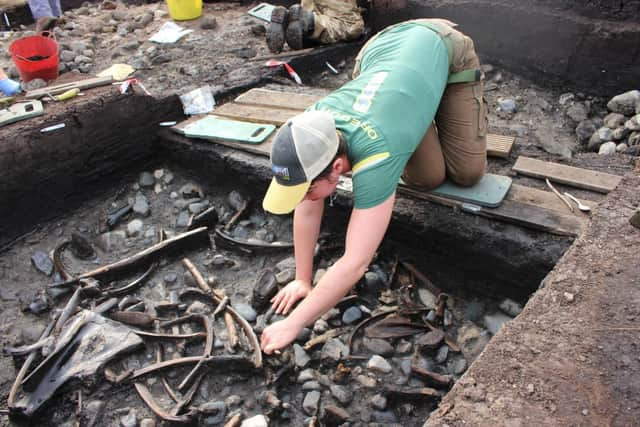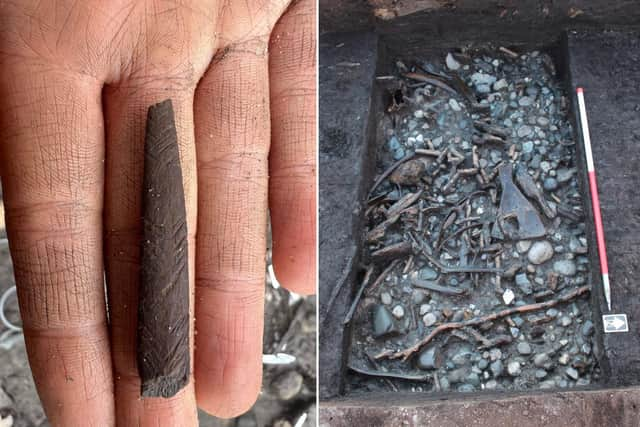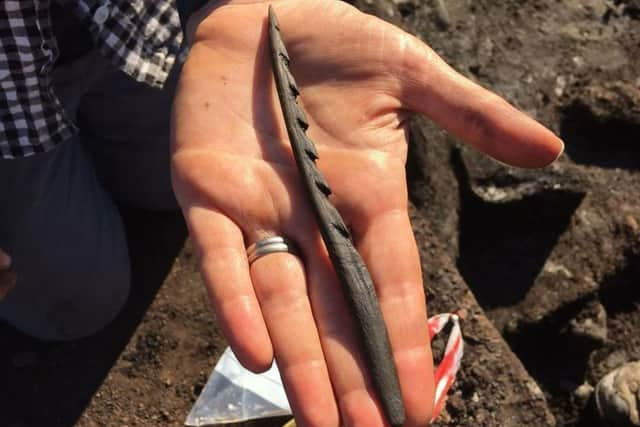Stone Age settlement with rare artefacts discovered in Scarborough
and live on Freeview channel 276
Artefacts discovered at the site included weapons, tools, animal bones and rare examples of woodworking, which have given experts an insight into the lives of those living in the area during the Mesolithic period, around 10,500 years ago.
Dr Nick Overton from The University of Manchester said: “It is so rare to find material this old in such good condition.
Advertisement
Hide AdAdvertisement
Hide Ad“The Mesolithic in Britain was before the introduction of pottery or metals, so finding organic remains like bone, antler and wood, which are usually not preserved, are incredibly important in helping us to reconstruct peoples’ lives.”


The settlement was discovered on the outskirts of Scarborough, in a field near Flixton Carr Lane, south of Eastfield’s industrial estate, which originally lay on the shore of an island in an ancient lake.
Over thousands of years, the lake slowly filled with thick deposits of peat, which gradually buried and preserved the site, according to the team from the universities of Chester and Manchester.
The team of experts said the excavation uncovered evidence of a wide range of animals being hunted in different habitats, including elk, red deer, beavers and water birds.
Advertisement
Hide AdAdvertisement
Hide AdThe bodies of hunted animals were butchered and parts of them were intentionally deposited into the wetlands at the island site, they added.


Hunting weapons made from animal bone and antler – which had been decorated – were also taken apart before being deposited on the island’s shore.
Archaeologists believe this shows that Mesolithic people had strict rules about how the remains of animals and objects used to kill them were disposed of.
Dr Barry Taylor, from the University of Chester, said that dig sites around the lake show humans “were deliberately managing and manipulating wild plant communities” thousands of years before the introduction of agriculture into Britain.
Advertisement
Hide AdAdvertisement
Hide AdDr Amy Gray Jones, from the University of Chester, said: “People often think of prehistoric hunter-gatherers as living on the edge of starvation, moving from place to place in an endless search for food, and that it was only with the introduction of farming that humans lived a more settled and stable lifestyle.


“But here we have people inhabiting a rich network of sites and habitats, taking the time to decorate objects, and taking care over the ways they disposed of animal remains and important artefacts.
“These aren’t people that were struggling to survive. They were people confident in their understanding of this landscape, and of the behaviours and habitats of different animal species that lived there.”
The excavations will feature in a new series of Digging for Britain, which will be broadcast on BBC Two at 8pm on Sunday February 5.